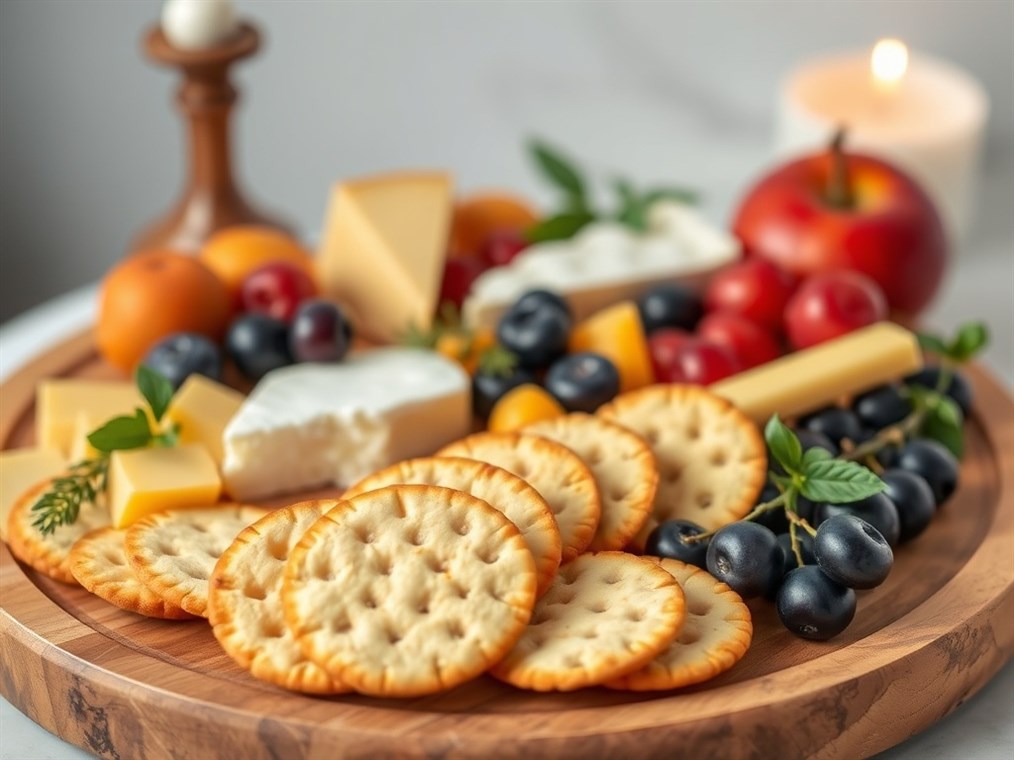Table Water Biscuits: More Than Just a Cracker on Your Cheeseboard
Let’s talk table water biscuits. Those unassuming little crackers have been a staple in pantries and on cheeseboards for ages, haven’t they? But have you ever stopped to wonder exactly what they are and why they’ve stuck around for so long? Well, I have! And that’s what we’re diving into today: the history, the ingredients, how to use them, and even a peek at the nutritional side of things. Get ready for a deep dive into this classic snack.
A Blast from the Past: Simple Beginnings for a Long Shelf Life
The story of these biscuits goes way back to the 19th century. Back then, the big challenge was keeping food fresh, especially on long sea voyages. The clever solution? Water biscuits! The key is using water instead of fat to bind everything together. This simple trick helped them stay fresh way longer than other biscuits. Pretty neat, huh?
Now, you can’t talk about table water biscuits without mentioning Carr’s of Carlisle. These guys really put table water biscuits on the map. It all started with Jonathan Carr, who opened a small bakery in Carlisle, England, back in 1831. Then, in 1890, Theodore Carr took things a step further, playing around with the recipe to make the biscuits even thinner and crisper. That’s how the “Table Water Biscuit” we know and love was born! They were basically a fancier version of the “ship’s biscuit” that sailors relied on. Fun fact: Carr’s was also the first biscuit maker to get a Royal Warrant. Yep, Queen Victoria herself gave them the royal seal of approval way back in 1841!
Interestingly, across the pond in the United States, similar “water crackers” were popping up around the same time. Josiah Bent started making them in Milton, Massachusetts, in 1801. Just like their British cousins, these crackers were designed to survive those long sea journeys without spoiling.
What’s Inside? The Surprisingly Simple Recipe
What I love about table water biscuits is how simple they are. You only need a few basic ingredients:
- Flour: This is the foundation, the main ingredient.
- Water: The magic ingredient! It binds the flour and gives the cracker that signature crispness.
- Salt: A little salt to bring out the flavor and help preserve them.
- Vegetable Oil: Some modern recipes add a touch of vegetable oil, but it’s not always necessary.
You might also see some added vitamins and minerals like calcium, iron, niacin, and thiamin in the ingredient list, depending on the brand.
The dough gets rolled out super thin, then they poke little holes in it (that’s called “docking”) to stop it from puffing up. Finally, they bake them in hot brick ovens until they’re perfectly crisp. That baking process is key to getting that light, airy texture we all love.
Beyond Cheese: How to Enjoy Your Water Biscuits
Table water biscuits are fantastic because they don’t have a strong flavor of their own. This makes them the perfect blank canvas for all sorts of tasty toppings. Of course, they’re a classic on cheeseboards, working equally well with a creamy brie or a sharp cheddar.
But don’t stop there! Try them with:
- Charcuterie: The crispy cracker is a great counterpoint to salty, cured meats.
- Dips and Spreads: They won’t compete with the flavors of your favorite pâtés, hummus, or other spreads.
- Soups and Salads: Crumble them on top for a satisfying crunch.
- Jams and Preserves: The plain cracker balances the sweetness of fruity jams and preserves perfectly.
A Quick Look at the Numbers: Nutrition
Okay, let’s be real: table water biscuits aren’t exactly a health food. But they can fit into a balanced diet if you don’t go overboard. Here’s a general idea of what you’re getting in each biscuit (keep in mind that it can vary a bit from brand to brand):
- Calories: Around 31 calories.
- Fat: Just a tiny bit, about 0.3g.
- Carbohydrates: Roughly 2.6g.
- Protein: A little bit, around 0.3g.
- Sodium: About 55mg.
They’re pretty low in fat and sugar, which is good. But they’re also low in fiber and can be a bit high in sodium. Also, some brands use palm oil, which isn’t great for the environment. Something to keep in mind!
Water Biscuits Around the Globe
Even though they started in Britain, water biscuits have traveled far and wide, especially to countries with connections to the British Empire. For instance, in Jamaica, you’ll find “Excelsior” water crackers everywhere. People eat them for breakfast or as a snack. They’re also popular in places like Chile. It just goes to show how a simple cracker can become a global favorite!
Final Thoughts
So, there you have it! Table water biscuits are way more than just a vehicle for cheese. They have a fascinating history, a simple recipe, and endless possibilities when it comes to serving. Whether you’re pairing them with your favorite cheese, piling them high with charcuterie, or just enjoying them on their own, these little crackers are a timeless snack that’s here to stay.

